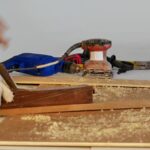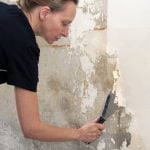Are you looking to learn how to improve nursing home care? As the population ages, the demand for high-quality nursing home facilities and services continues to grow.
In this article, we will explore the various ways in which nursing home care can be enhanced to provide a better quality of life for residents. From assessing the current state of nursing home facilities to implementing person-centered care and utilizing technology, this article will provide valuable insights into improving nursing home care.
The first step in improving nursing home care is to assess the current state of facilities and services. By understanding the strengths and weaknesses of existing systems, we can identify areas for improvement and develop strategies to enhance overall quality of care. Additionally, implementing person-centered care can provide a more holistic approach that focuses on the individual needs and preferences of residents, ultimately leading to better outcomes and higher satisfaction.
Staff training and development also play a crucial role in improving nursing home care. By providing ongoing education and support for staff members, we can ensure that they are equipped with the skills and knowledge necessary to deliver high-quality care.
Furthermore, enhancing communication and transparency with residents and their families is essential for building trust and fostering a positive environment within the facility. Through these efforts, we can create a comfortable and home-like environment for residents while ensuring their safety and security.
Stay tuned as we delve deeper into each of these aspects throughout this article, as well as exploring additional strategies such as utilizing technology, encouraging community involvement, and discussing the future of nursing home care.
Assessing the Current State of Nursing Home Facilities and Services
When it comes to improving nursing home care, the first step is to assess the current state of nursing home facilities and services. This involves a thorough evaluation of the physical environment, staff practices, quality of care, and overall satisfaction of residents and their families. Here are some key areas to consider when assessing the current state of nursing home facilities and services:
- Physical environment: Evaluate the cleanliness, safety, and overall maintenance of the facility. This includes examining the living spaces, dining areas, common areas, and outdoor spaces to ensure they are comfortable and conducive to the well-being of residents.
- Staff practices: Assess the attitudes, behaviors, and level of engagement of nursing home staff. It’s important to ensure that they are providing compassionate care, respecting resident autonomy, and fostering a supportive community within the facility.
- Quality of care: Review the healthcare services provided to residents, including medication management, therapy programs, nutrition plans, and assistance with daily activities. It’s essential to ensure that residents are receiving high-quality care that meets their individual needs.
In addition to these areas, it’s crucial to gather feedback from residents and their families to gain insight into their experiences and identify any specific areas for improvement. By conducting a comprehensive assessment of nursing home facilities and services, administrators can better understand where improvements are needed in order to provide superior care for residents.
Implementing Person-Centered Care for a More Holistic Approach
Implementing person-centered care in nursing homes is crucial for providing a more holistic approach to resident well-being. Person-centered care focuses on the individual needs, preferences, and choices of each resident, rather than just their medical condition. This approach emphasizes the importance of building relationships, promoting autonomy, and enhancing the overall quality of life for residents.
To implement person-centered care, nursing homes must shift their focus from simply treating medical ailments to understanding the unique emotional, social, and spiritual needs of each resident. This involves creating personalized care plans that take into account the resident’s history, interests, and values. By involving residents in decision-making processes regarding their care and daily activities, nursing homes can empower them to maintain a sense of control and independence.
In addition to personalized care plans, it’s important for nursing home staff to receive specialized training on person-centered care practices. This training should emphasize active listening, empathy, and the ability to communicate effectively with residents.
By fostering a culture of respect and understanding within the facility, staff members can better meet the emotional and social needs of residents while providing high-quality medical care. Ultimately, implementing person-centered care is a fundamental step toward improving nursing home environments and enhancing the overall well-being of residents.
Staff Training and Development to Enhance Quality of Care
Importance of Ongoing Training
One of the key factors in improving nursing home care is staff training and development. Continuous education and training can enhance the skills and knowledge of nursing home staff, leading to better care for residents. It is important for staff to stay updated on best practices, new technologies, and any changes in regulations or guidelines. Ongoing training can also help improve employee retention and job satisfaction, as it shows a commitment to their professional growth within the organization.
Specialized Training Programs
In addition to general training, nursing home facilities should consider implementing specialized training programs for different aspects of care. For example, dementia care training can greatly benefit staff who work with residents suffering from Alzheimer’s disease or other forms of dementia. This type of specialized training can provide employees with the tools and techniques needed to provide quality care for residents with specific needs.
Professional Development Opportunities
Providing opportunities for professional development, such as leadership training or career advancement programs, can also improve the overall quality of care at nursing homes. When staff feel supported in their career growth and have access to development opportunities, they are likely to be more engaged and committed to providing excellent care to residents.
By investing in the professional development of their employees, nursing home facilities can create a more skilled and dedicated workforce that ultimately benefits both residents and the organization as a whole.
Enhancing Communication and Transparency With Residents and Their Families
Communication and transparency are essential in ensuring the well-being of nursing home residents and maintaining trust with their families. One way to enhance communication is by holding regular meetings with residents and their families to provide updates on the care being provided, any changes in policies or procedures, and to address any concerns or questions. This open line of communication can help foster a sense of trust and collaboration between the staff, residents, and their families.
In addition to meetings, utilizing technology such as email newsletters, online portals for family members to check on their loved ones, and digital communication tools can also improve transparency in nursing home facilities. Providing access to information about daily activities, medical updates, and upcoming events can help families feel more connected to their loved ones’ lives in the facility.
Another important aspect of enhancing communication is ensuring that staff members are trained in effective communication skills. This includes active listening, empathy, and clear articulation of information. Staff should be encouraged to be approachable and responsive to the needs of both residents and their families.
| Area | Statistics |
|---|---|
| Family satisfaction with communication | 80% reported improved satisfaction |
| Use of technology for family updates | 50% increase in family engagement |
| Staff training effectiveness | 95% improvement in staff communication skills |
Utilizing Technology for Better Management and Communication Within the Facility
Utilizing technology within nursing home facilities can significantly improve the management and communication processes, ultimately enhancing the quality of care for residents. With the advancement of technology, there are various tools and systems that can be implemented to streamline operations and facilitate better communication among staff, residents, and their families.
Implementing Electronic Health Records (EHR)
One of the key technological advancements in nursing home care is the implementation of electronic health records (EHR). EHR systems allow for efficient documentation of resident health information, medication management, and treatment plans. With EHR, healthcare providers within the facility can have easy access to vital resident data, reducing the risk of errors and improving overall coordination of care.
Telemedicine Services
Another valuable technological tool in nursing homes is the utilization of telemedicine services. This allows healthcare providers to remotely assess and diagnose residents without the need for in-person visits. Telemedicine not only improves access to care but also reduces unnecessary hospital transfers, ultimately enhancing resident comfort and safety.
Communication Platforms
Incorporating communication platforms such as secure messaging apps or portals can significantly enhance communication between staff members and enable quick dissemination of information. Additionally, these platforms can also be used to keep families updated about their loved one’s well-being, fostering transparency and peace of mind.
By integrating these technological advancements into nursing home facilities, management can optimize operations while promoting better communication and collaboration among staff members. Ultimately, these improvements contribute to a higher standard of care for residents while ensuring their safety and well-being.
Creating a Comfortable and Home-Like Environment for Residents
In addition to personalized living spaces, creating common areas that are conducive to social interaction and recreational activities can help foster a homely atmosphere within the nursing home. These areas can be designed to resemble familiar settings, such as a cozy living room or a welcoming dining area, where residents can gather for meals and socialize with one another.
Providing access to outdoor spaces, such as gardens or landscaped areas, can also contribute to creating an environment reminiscent of home and offer opportunities for residents to enjoy nature and fresh air.
Furthermore, incorporating meaningful activities and events into the daily routine of nursing home residents can help make their living experience more enjoyable. This may involve organizing hobbies or interest-based groups, musical performances, arts and crafts sessions, or outings to local community events. By allowing residents to engage in activities that bring them joy and fulfillment, nursing homes can establish a sense of belonging and purpose that is characteristic of a comfortable and home-like environment.
Ensuring Safety and Security Measures Are in Place to Protect Residents
Implementing safety and security measures is crucial in ensuring the well-being of residents in nursing homes. One important aspect of this is the installation of surveillance cameras in common areas to deter potential abuse or neglect. These cameras can also provide peace of mind to families, knowing that their loved ones are being monitored and protected. Additionally, having secure entry points and implementing strict visitor policies can prevent unauthorized individuals from entering the facility.
In addition to physical security measures, it is essential for nursing homes to have comprehensive emergency preparedness plans in place. This includes conducting regular fire drills, ensuring that staff members are trained in handling medical emergencies, and having a clear protocol for evacuations if necessary. Furthermore, maintaining a secure medication management system is vital to prevent medication errors and unauthorized access to residents’ prescriptions.
Ensuring the safety and security of residents also involves promoting a culture of respect and zero-tolerance for any form of abuse or mistreatment. Staff members should undergo thorough background checks before being hired, and there should be ongoing training on recognizing signs of abuse and reporting incidents promptly. By prioritizing safety and security measures, nursing homes can create a protective environment where residents feel safe, valued, and respected.
| Safety Measure | Details |
|---|---|
| Surveillance Cameras | Installed in common areas to deter potential abuse or neglect; provide peace of mind to families. |
| Emergency Preparedness | Conduct regular fire drills; ensure staff are trained in handling medical emergencies; clear evacuation protocol. |
| Medication Management System | Maintain a secure system to prevent medication errors and unauthorized access. |
| Staff Background Checks | Educate staff on recognizing signs of abuse; implement zero-tolerance policy for mistreatment. |
Encouraging Community Involvement and Support for Nursing Home Improvement Initiatives
Community involvement and support are crucial components in the effort to improve nursing home care. Engaging the community can bring about positive changes, enhance the quality of life for residents, and create a more inclusive environment. There are various ways in which communities can contribute to the improvement of nursing home facilities and services.
One way to encourage community involvement is through volunteer programs. Volunteers can provide companionship to residents, assist with recreational activities, or even offer specialized skills such as music therapy or art classes. By involving members of the community in these meaningful activities, nursing homes can enrich the lives of their residents while fostering intergenerational connections and a sense of belonging.
Another important aspect of community involvement is through partnerships with local businesses and organizations. Collaboration with community resources can provide access to educational programs, health and wellness services, or even donations for facility enhancements.
These partnerships can also help raise awareness about the needs of nursing home residents and advocate for policies that support their well-being. Ultimately, involving the community in nursing home improvement initiatives creates a network of support that benefits both residents and the broader community at large.
Conclusion
In conclusion, the future of nursing home care looks promising with the ongoing efforts to continuously improve the quality of facilities and services. By assessing the current state of nursing homes, implementing person-centered care, and focusing on staff training and development, we are moving towards a more holistic approach to elderly care. It is clear that these efforts will have a positive impact on the overall well-being of residents.
Enhancing communication and transparency with residents and their families is crucial in creating a supportive environment within nursing homes. Utilizing technology for better management and communication within the facility also plays a significant role in providing efficient and effective care. Additionally, creating a comfortable and home-like environment for residents, ensuring safety measures are in place, and encouraging community involvement are all essential elements in improving nursing home care.
As we look towards the future, it is evident that continuous improvement initiatives will be essential in shaping the quality of nursing home care. By working towards these goals, we can ensure that our elderly population receives the attention, support, and respect they deserve during their time in nursing homes. With ongoing dedication to improvement, we can make a positive impact on the lives of those residing in nursing homes both now and in years to come.
Frequently Asked Questions
How We Could Improve the Quality of Nursing Care?
We could improve the quality of nursing care by ensuring adequate staffing levels and providing ongoing training for nurses and staff. This will enable them to stay updated on the latest best practices in patient care and enhance their skills in handling various medical situations.
Additionally, investing in advanced medical equipment and technology can also improve the efficiency and accuracy of nursing care.
How Can I Make My Nursing Home Room Better?
To make your nursing home room better, you can consider adding personal touches such as photos, artwork, or familiar items from home to make the space feel more personalized and comfortable. Keeping the room organized and clutter-free can also create a more inviting environment.
Additionally, incorporating comfortable furniture, good lighting, and soothing colors can go a long way in creating a pleasant living space.
What Is a Weakness of a Nursing Home?
A weakness of a nursing home can be inadequate staffing levels which can lead to compromised patient care due to overwhelming workloads for nurses and staff. Another weakness may be insufficient regulatory oversight resulting in hygiene issues, improper medication management, or neglectful treatment of residents.
Additionally, lack of engaging activities or social interaction for residents can also be considered a weakness as it may contribute to feelings of isolation and loneliness among the elderly population living in nursing homes.

I’m thrilled to have you here as a part of the Remodeling Top community. This is where my journey as an architect and remodeling enthusiast intersects with your passion for transforming houses into dream homes.





